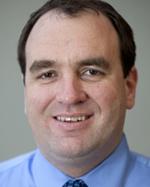This article was originally published by GOVERNING on governing.com and has been reprinted with permission.
Five years ago, nobody would have mistaken Detroit's stoplights for being "smart." They were so obsolete, in fact, that city transportation officials couldn't even tell whether most of the lights were working without visiting the intersections in person.
But in solving that very basic problem, the city has taken significant steps toward creating some of the smartest intersections in the country. It is experimenting with five "smart intersections" along a nearly two-mile stretch of Larned Street near the riverfront, including some downtown sites.
The new networked traffic lights, which are connected to video cameras, can respond quickly to changing conditions. They do that by analyzing the video on the spot to determine different types of road users, how they're moving and how to respond.
Miovision, a vendor working in partnership with Detroit, has touted the city's
newest signal exchange as "the world's smartest intersection." (Miovision)
"The video, it's talking to you," says Mark de la Vergne, Detroit's chief of mobility innovation. "Before, you would just get numbers. Now, we know where they are crossing. We know when they are crossing. We know how many people are driving through a red light. That's going to help us inform a lot of our work in the next few years."
Like many cities' signals, Detroit's newest intersection lights can prioritize signals for emergency vehicles such as ambulances and police cars. But they can also help make crossings safer for cyclists and pedestrians. The lights can extend green signals for cyclists who wouldn't otherwise be able to clear the intersection in time, and the system can alert Waze users or connected vehicles that jaywalkers are ahead.
The city, along with its vendor, Miovision, is also working on ways to prioritize signals for buses and freight-hauling trucks. The lights may even be able to change with the weather - for example, displaying longer yellow lights when it's raining.
Detroit may one day even be able to use the data collected by its smart intersections to improve the design of the intersections themselves.
To get to this point, Detroit spent four years connecting traffic lights to a central network. Now, 40 percent of the city's intersections are linked and have the equipment installed that helps them analyze and respond to changing circumstances. The signals are all designed so that they can be regularly updated to add more features, akin to downloading new apps or updating old ones on a smartphone.
And they all use open data systems, rather than proprietary ones, which makes it easier to interact with other connected infrastructure. So, for example, Miovision was able to connect the city's police cars with the traffic signals using existing transponders on the police vehicles, rather than requiring new equipment. That easy connection meant that the city could start using signal prioritization in just a matter of weeks. Preliminary tests show that the new technology cut emergency response times by 20 percent.
The networked system also makes it easy to upgrade. Detroit's mayor said in January that he wanted the city to show off its technological prowess for the Intelligent Transportation Society of America's annual conference, which took place last week. Miovision made a flurry of upgrades that added several new features, all within 90 days and without having to add more hardware, says Dave Bullock, Miovision's vice president of market strategy.
It's part of a "mind shift in how cities think about infrastructure," he says. "The old way was, when you have a problem, you add a piece of hardware to your cabinet. The new way is, you put this piece of hardware at the roadside. When you have a problem, instead of adding more hardware, we add more software."
Other cities are working on similar improvements, even if they're using slightly different approaches.
Denver, for example, is spending $1 million to improve the intersection of Federal Boulevard and 29th Avenue. Those improvements will help detect pedestrians and add more time for slower walkers to cross, automatically give cyclists a green signal without the need to push a button, prioritize buses along the corridor, and provide better communication with emergency vehicles.
"These case studies will also help directly inform how we deliver connected freight, connected fleet, and more connected citizens quickly. All of this data will feed directly into the traffic management center so the city of Denver can monitor real-time events and make informed decisions based on historical trends.," says Heather Burke, a spokeswoman for Denver Public Works.
But as this type of technology is deployed more widely, one of the big challenges facing Detroit and other cities will be to manage and analyze the new data from the connected intersections.
The standard approach to making safety improvements, says Bullock from Miovision, is for cities to analyze crash data. But even when transportation planners find dangerous intersections, they sometimes must wait years in order to gather enough data to see whether the changes they made to the intersection actually made it safer.
The cameras on smart intersections, though, gather a lot more information than just crash data. "For every crash, there are 100 near-misses. For every near-miss, there are 100 or more dangerous actions or safety hazards. They can tell you almost as much about a road hazard as crash data," Bullock says.
"We can tell a city where the most dangerous intersections are, and at what times of day. We can tell them a ton about what causes [those dangers]. And when they make a change - literally, within days - we can tell them if they changed behavior," he says.








